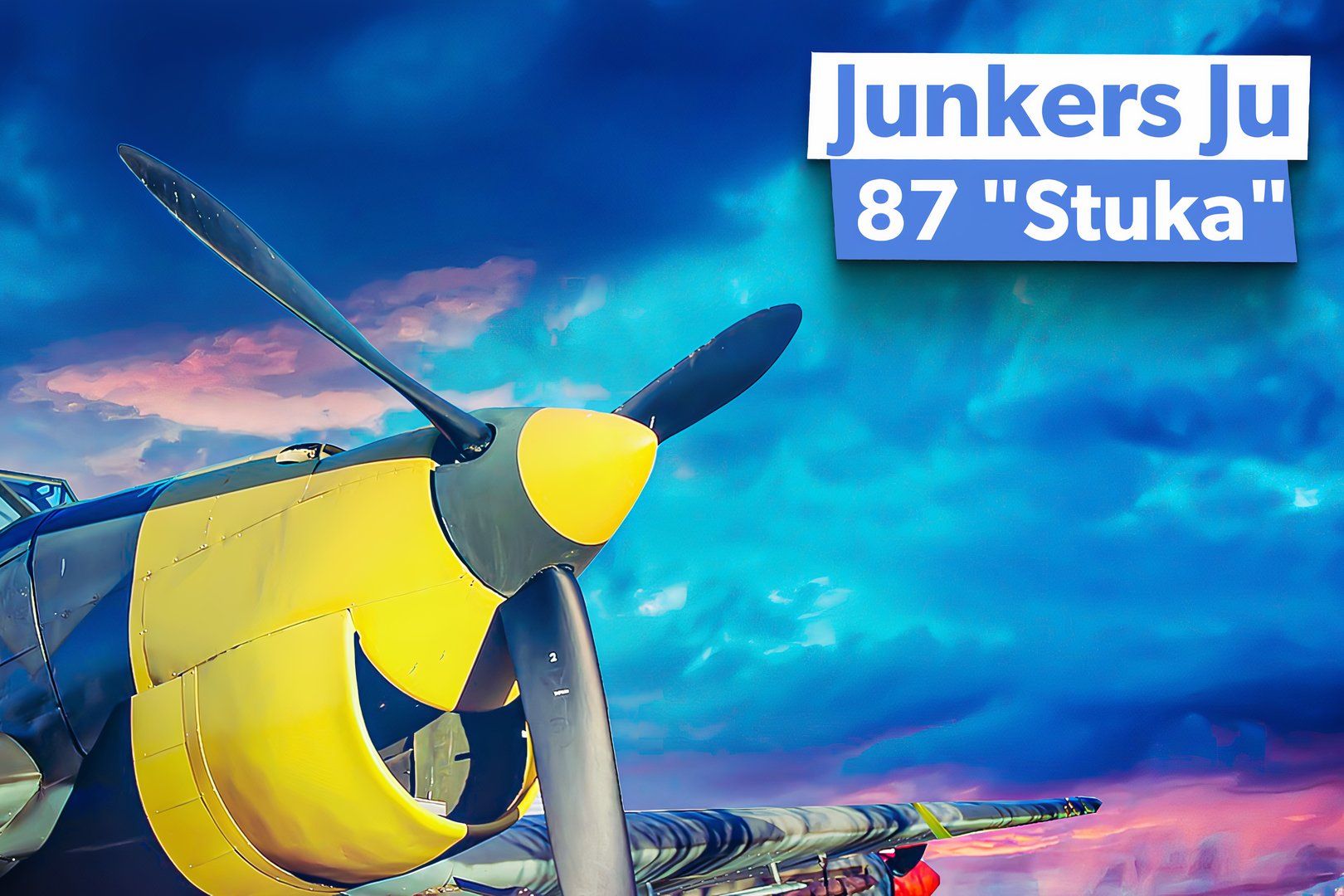Summary The Junkers Ju-87, or Stuka, was an accurate WW2 dive bomber that ultimately became obsolete due to advancements in aviation technology. Key features of the Stuka included dive brakes, an automatic pull-up system, and Trumpets of Jericho sirens for enemy targets. Various models of the Stuka were developed, but only 100 out of 6,000 built remained operational by May 1945, with a few surviving examples worldwide.
One of the most feared aircraft in World War Two, the Junkers Ju-87, was known for its accuracy and sunk more ships than any other aircraft in history. Eventually, the type was rendered obsolete due to its low speed and the advent of jet bombers, with few surviving examples remaining worldwide. Designing the dive bomber Length : 11.

5 m (37 ft 8.75 in) Wingspan : 13.8 m (45 ft 3.
5 in) Height : 3.9 m (12 ft 9.25 in) Empty weight : 3,900 kg (8,598 lb) (equipped) Max takeoff weight : 6,600 kg (14,550 lb) Powerplant : 1 × Junkers Jumo 211J V-12 inverted liquid-cooled piston engine, 1,000 kW (1,400 hp) While a longstanding myth recounts the tale of World War One ace Ernst Udet becoming enamored with US Navy Curtiss F11C-2 Goshawk biplane dive bombers, the truth is the aircraft had been in development for some time before the Second World War.
The first prototype was produced and tested by the Junkers aircraft company in April 1935, quickly earning the nickname Stuka from sturzkampfflugzeug , the German word for dive bomber. The World War II fighter was well-known for its precision in ground attacks. The aircraft was notable for several key features that improved its effectiveness.
The airplane was built with dive brakes to improve its accuracy and maneuverability while in the crucial dives for which it became known. The bombs were attached using a hinged external bomb rack that would swing out to ensure the bombs would not hit the propellor when released. In addition to the dive brakes, the plane also featured a system to automatically pull the aircraft out of the dive into a climb once the payload was released.
This especially tricky maneuver increased G forces as the plane sharply pulled up at high speeds, often causing the pilot to lose consciousness. The planes were also known for the ‘Trumpets of Jericho’ sirens that went off as they dived toward enemy targets. The whistles were later removed as they caused a significant increase in drag and were replaced by whistles mounted directly on the bombs.
Diving at steep angles ensures bombs hit the intended target with little interference from wind or other external factors. A range of models The initial prototype led to several further configurations of the aircraft, generally named in alphabetical succession: Ju-87A was assigned to the first production series. The aircraft featured an all-metal frame and upgraded engines.
Ju-87B became the most popular variant of the type. Capable of carrying a 1,100-pound main bomb, it became the first mass-produced variant. Ju-87C was initially intended to be an aircraft carrier-based version with folding wings.
They were designed to remain afloat for up to three days in calm seas but never entered full-scale production. Ju-87D , the “Dora,” featured a streamlined cockpit with better visibility and upgraded guns and armor. The payload was also increased to enable the plane to carry ordinances weighing almost 3,900 pounds.
Ju-87G saw a significant redesign that removed its dive brakes and added a 37-millimeter automatic cannon pod under each wing to serve in an anti-tank role. Ju-87R is an outlier in the naming sequence. The R stood for Reichtweite, or range, which was extended from 340 to 875 miles thanks to extra wing tanks.
The Stuka legacy Maximum speed: 410 km/h (255 mph, 222 kn) at 4,100 m (13,500 ft) Cruise speed: 319 km/h (198 mph, 172 kn) at 5,100 m (16,700 ft) Range : 1,535 km (954 mi, 829 NM) at 5,100 m (16,730 ft) Service ceiling: 7,300 m (24,000 ft) Time to altitude : 5,000 m (16,400 ft) in 20 minutes The type widely fell out of use, and only 100 Stukas out of around 6,000 built were still operational by the final Luftwaffe ground-assault mission on May 4th, 1945. Several models have been retrieved from the Mediterranean Sea and have since been partially restored and displayed. An example rests at the Technik Museum Sinsheim after being recovered in 1989 by a German-French diving crew from a depth of 90 meters (295 feet) near St.
Tropez. Love aviation history ? Discover more of our stories here. At least two complete Stukas survive worldwide.
A 1941 Junkers Ju-87R-2 Tropical Stuka is displayed in a deep dive at the Museum of Science and Industry in Chicago. The Stuka was forced to make an emergency landing in Libya and remained there as the British captured the German air base. Following the war, the British Information Services sent it to the US as part of a display tour and later donated it to the museum.
The other surviving model, a Ju87G-2 with the serial number 494083, is housed at the Royal Air Force Museum in the United Kingdom as part of a Battle of Britain display. Originally built as a D-5 variant and later converted to G-2, British forces captured the unit in Northern Germany in 1945. A third intact model has been reported to be in existence, but this could not be independently verified.
No examples remain flying, but one is under restoration..



















